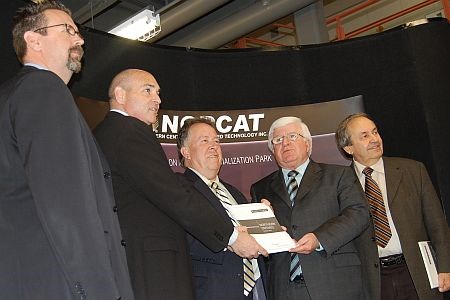Though replete with more than 100 ideas, the preliminary release of the long-awaited Growth Plan for Northern Ontario has stirred excitement over its proposals and hesitation over its lack of detail.
"This is a great opportunity for Northerners," says City of Timmins Mayor Tom Laughren, highlighting the value of 14 provincial ministries working together to implement the plan.
"It's more of a general document and we need to push it along, but it finally allows us to start defining our destiny."
The document, drawn from consultations and suggestions from 2,500 people over three years, stands as an opportunity for the region to move forward rather than dwell on recessionary times or provincial deficits, says Laughren.
Other political leaders such as Wawa Mayor Howard Whent say there are far too few details in the document, particularly about how provincial ministries will come together, or how the 25-year plan will receive updates.
"There's meritorious stuff within it, but certainly there's more work to be done with it," says Whent, who adds the emphasis on major urban centres may leave rural communities out in the cold.
"It's not complete from my point of view."
A final round of town hall-style public input sessions on the Growth Plan began in Thunder Bay Nov. 9 and continued through the region until Dec. 3.
This will lead to a finalized plan in early 2010, says Minister of Northern Development, Mines and Forestry Michael Gravelle.
"Releasing the growth plan marks a pivotal change for Northern Ontario," says Gravelle.
"Communities can now look beyond the challenges and tap into their potential and their inherent advantages."
The 100 suggestions put forth in the 61-page document cover the spectrum of Northern Ontario concerns, from research and innovation to Aboriginal economic development.
The plan includes projects long underway through various arms of the province. These range from long-discussed items like changes to forestry tenure, the upgrade of the transmission network to increase capacity for renewable energy projects and changes to the Ontario Mining Act.
Other elements include expanding projects that are already in place in various parts of Northern Ontario, such as increased investment in networks to create inventories of regional assets and economic data.
Though still undefined, some suggestions in the proposed plan offer big changes for the North, including creating "regional economic zones" within the space of one year of the passage of the growth plan. The document states these would act as an "inclusive, collaborative mechanism for long-term economic development, labour market, infrastructure, land-use, cultural and population planning."
Though no details are provided as to who would oversee the administration of these zones, they would involve providing "base capital investments and operational funding" with a number of accountability measures.
The importance of having the chance at influencing this and other elements of the Northern Ontario-focused document is not lost on the local governments of the North, says Mac Bain, president of the Federation of Northern Ontario Municipalities (FONOM).
After FONOM officials pass the document down to city councils, business communities and hospital boards, the next two months will be spent energetically hammering out what needs to be tweaked before it's finalized, says Bain.
"We won't have another opportunity," he says. "The province isn't going to have us do all this and devise plan and then allow us to do something else five years down the road. This is our shot at it. We've got to it get right now."
He also points to past "future of Northern Ontario" proposals as seen in so-called 2007 "Rosehart Report" and the FONOM Leaders' Summit held in Timmins that same year, as the catalysts for the current Growth Plan.
This made-in-Northern-Ontario approach is also hailed by Gravelle, who encourages the region to embrace the plan as a point of pride, adding that collaboration will help determine the true success of the initiative.
"Making the Growth Plan work will be up to all of us, not one single government, company, organization or individual; it will take the commitment and the involvement of everyone and frankly, I can't emphasize that enough," says Gravelle.




